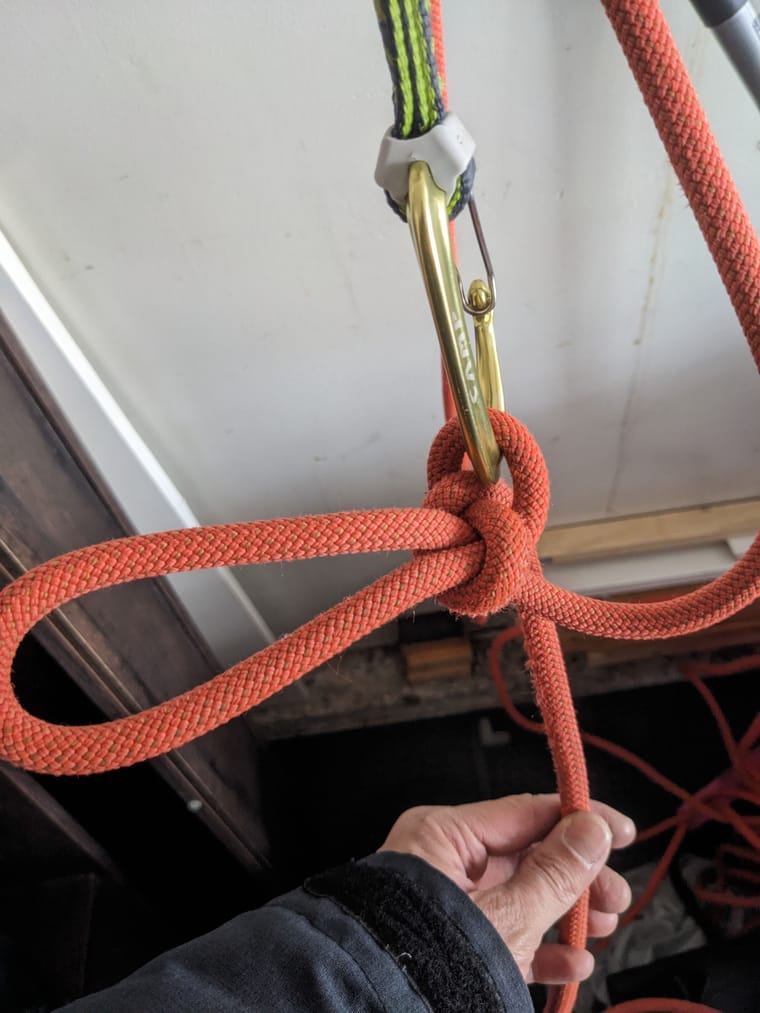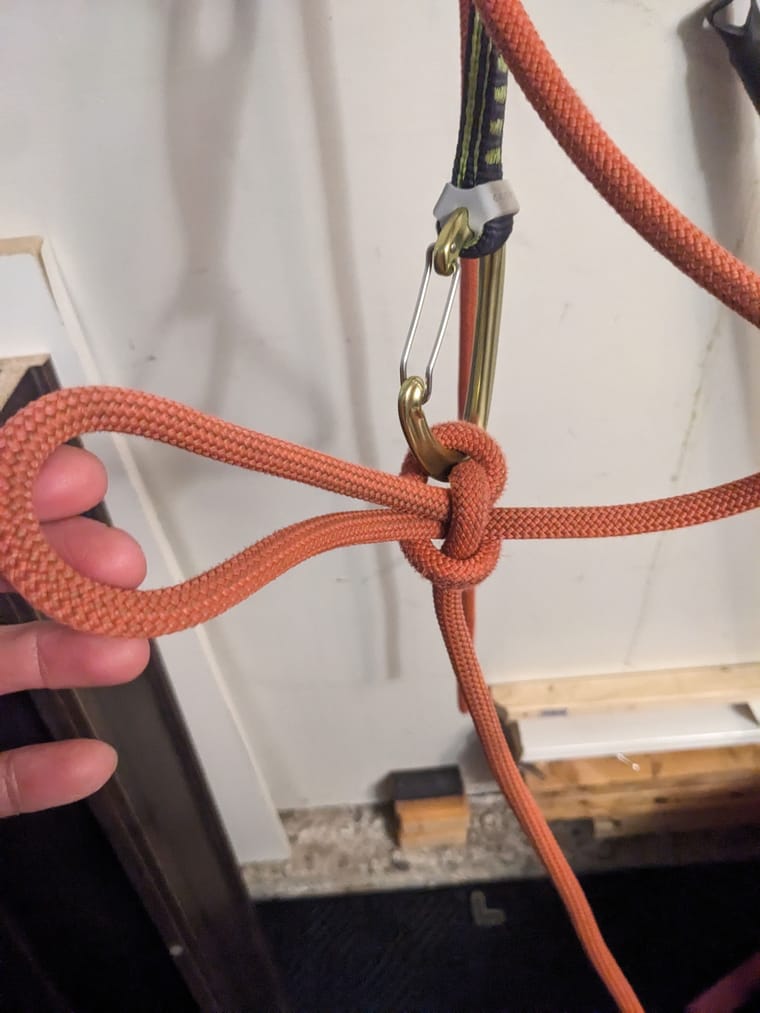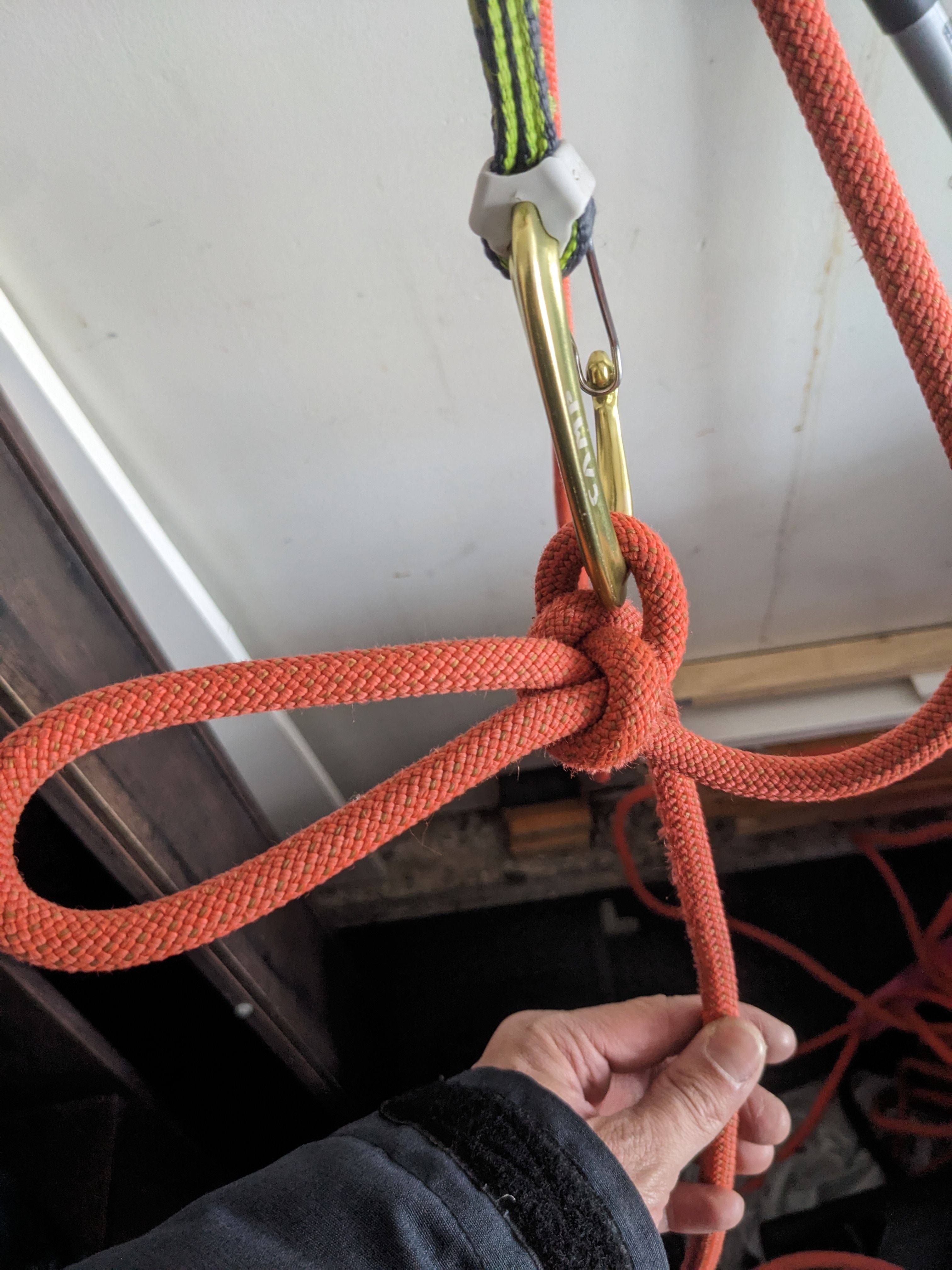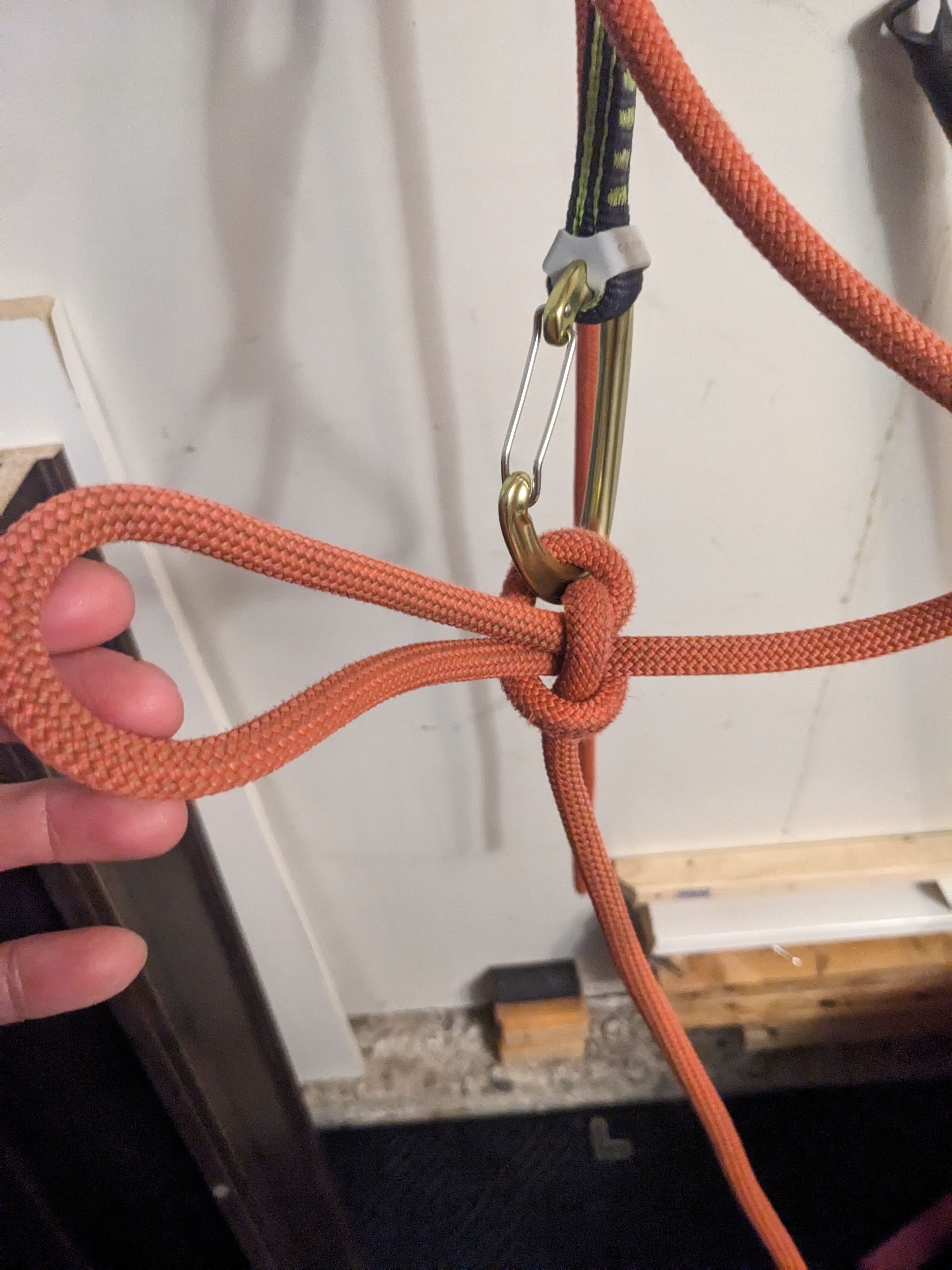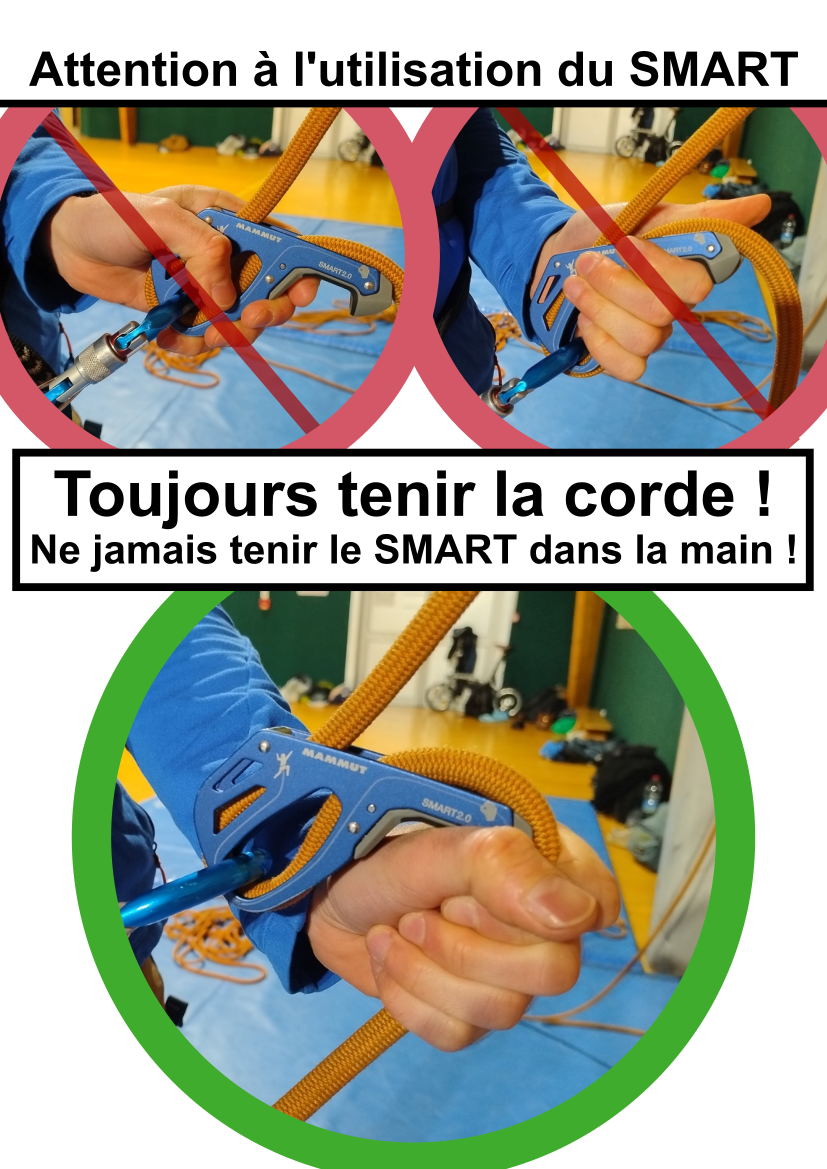One-handed release slipknot for TRS
-
A question for the TRS folks in the climbing community...
This past Monday I went out and top rope solo'd for the first time. It was a nice experience and I learned a lot. I look forward to honing some of the practices (e.g. refixing strategy, bottom weight, etc.)
One thing that I was not prepared for was a specific knot that Brent Barghahn teaches in his TRS video with Ryan Jenks from How NOT 2. He states that he refixes his rope to prevent rope abrasion (
 ), and this can be done in a number of ways. He now prefers to tie a slipknot with a full twist (instead of a half-twist), instead of something that requires him to stop and untie, like an alpine butterfly.
), and this can be done in a number of ways. He now prefers to tie a slipknot with a full twist (instead of a half-twist), instead of something that requires him to stop and untie, like an alpine butterfly.I attmepted to tie this knot a number of times in preparation (and on site), but it never looked right. I ended up using a butterfly.
Later I rewatched the video and practiced the knot for a full half hour before I figured out exactly why it didn't look right. Can you figure it out?
Here is the knot tied correctly, and then incorrectly. Can you spot which is which?
